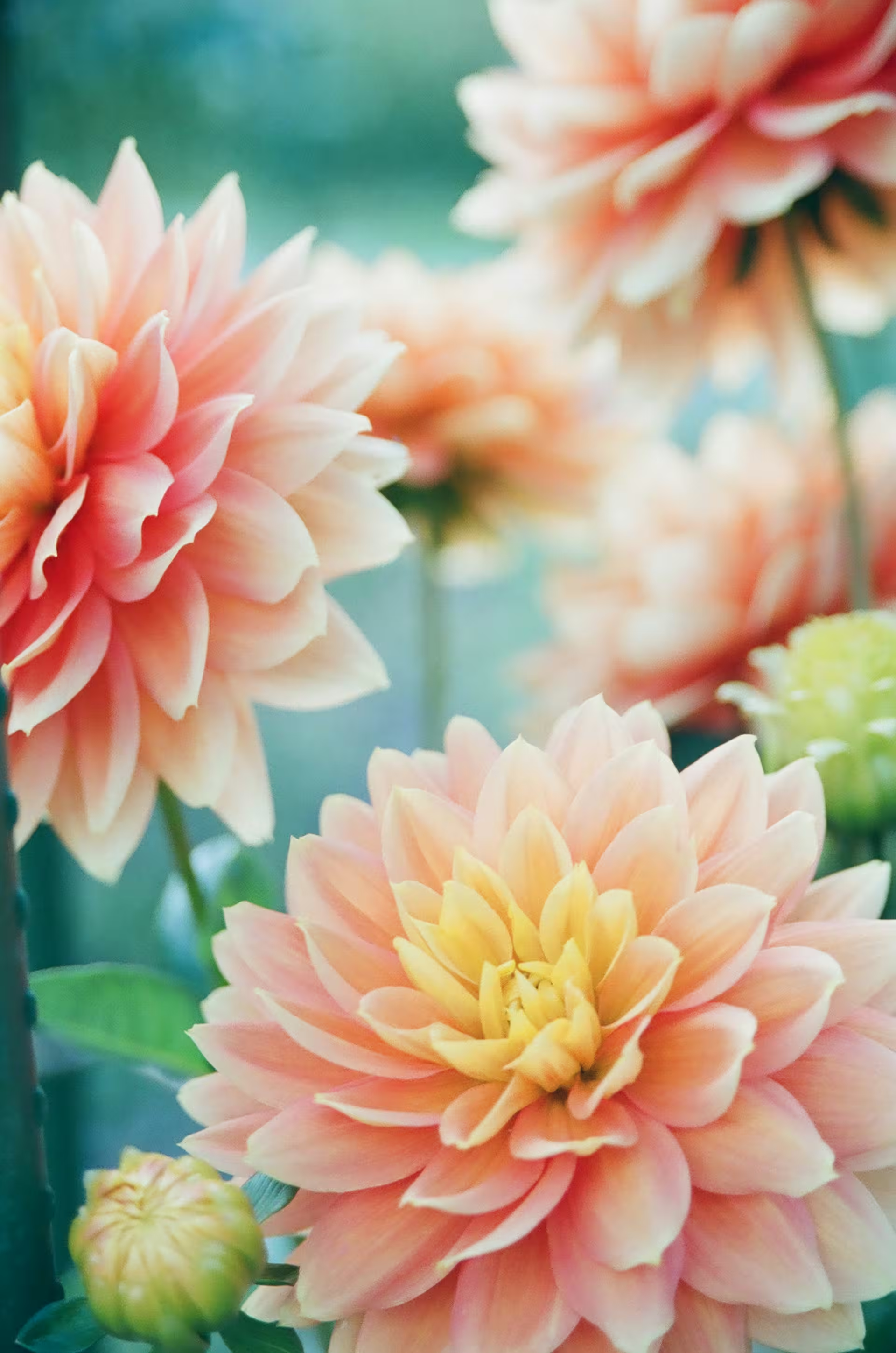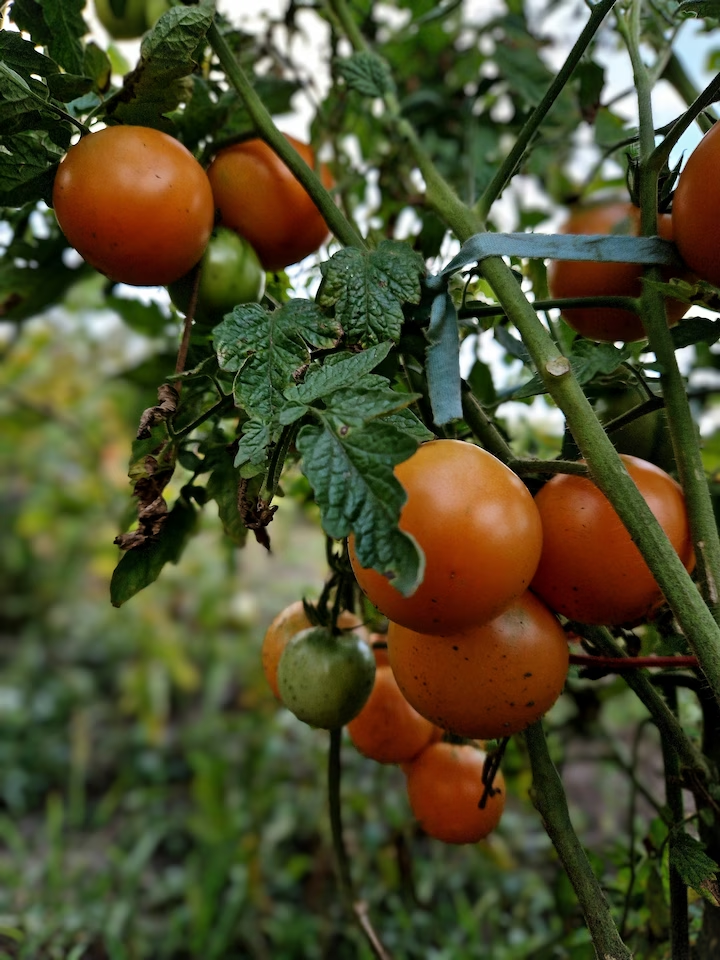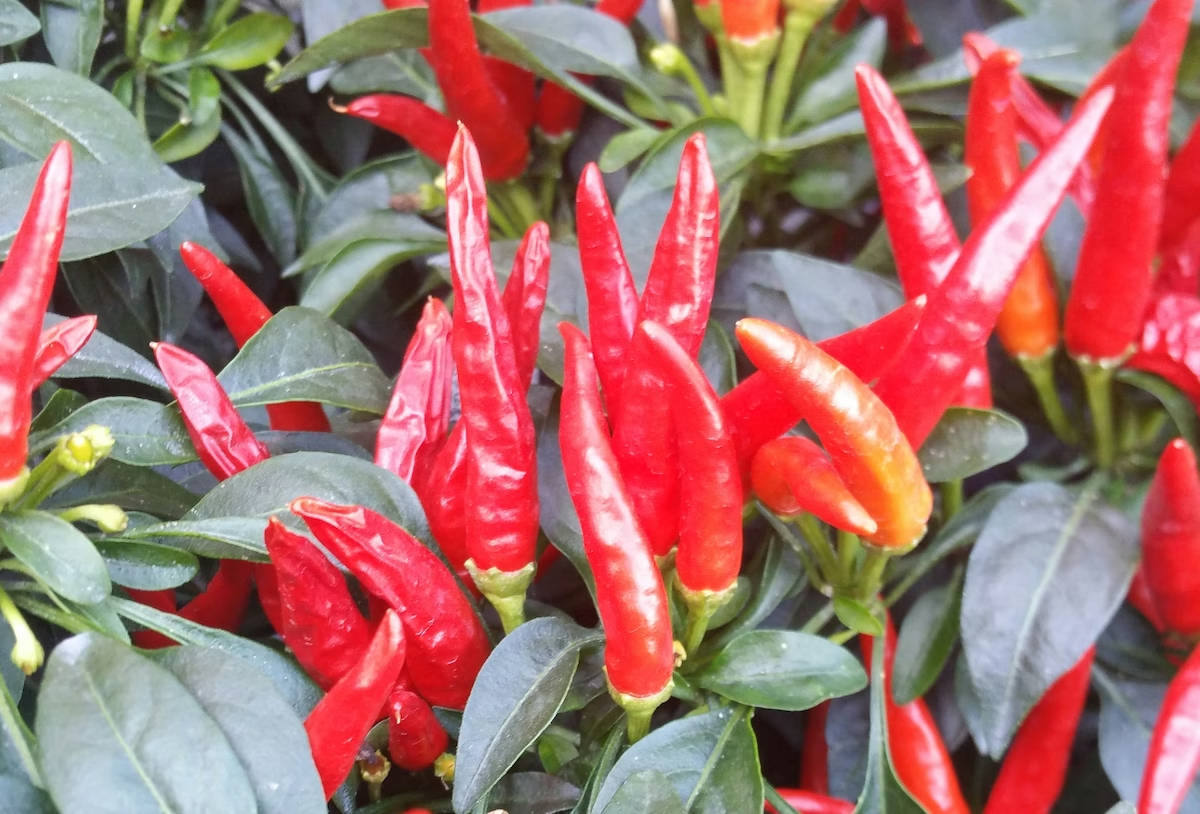Dahlia
Dahlia spp.
Dahlias are tuberous perennials native to Mexico, celebrated for their diverse and often stunning flowers produced from mid-summer until the first frosts. Available in nearly every color except blue, flower forms range from small single blooms to giant 'dinner-plate' doubles. They require full sun, well-drained soil, and regular feeding. Tubers are typically lifted and stored over winter in colder climates like the UK.

Quick Information
Planting Calendar
Growing Guide for
1 Start Tubers Indoors (Optional)
For earlier blooms, start tubers indoors about 4-6 weeks before the last expected frost. Plant tubers horizontally in pots with good draining compost, about 5-10 cm (2-4 inches) deep, with any visible 'eyes' or sprouts pointing up. Water very sparingly until growth appears. Keep in a bright, frost-free place (around 15-20°C).
2 Plant Tubers Outdoors
Plant tubers or started plants outdoors after all danger of frost has passed and the soil has warmed (typically late May in the UK). Choose a site with full sun (6+ hours) and well-drained soil. Dig a hole about 15 cm (6 inches) deep, amend with compost. Place tuber horizontally with eyes pointing up. Cover initially with 5-10 cm (2-4 inches) soil. Insert stakes for tall varieties now.
3 Provide Support
For varieties growing taller than 60-90 cm (2-3 ft), provide support with stakes, cages, or netting. Install supports early. As the plant grows, loosely tie the main stems to the support at intervals.
4 Water Regularly
Once growth is active (shoots are visible and growing), water dahlias deeply 1-2 times per week, more often during hot, dry spells or if in containers. Aim for consistent moisture, but ensure good drainage to prevent tuber rot.
5 Pinch Growing Tips
When plants reach about 30-40 cm (12-16 inches) tall and have 3-4 sets of leaves, pinch out the central growing tip just above a leaf node. This encourages branching, leading to a sturdier plant with more flowers.
6 Fertilize for Blooms
Dahlias benefit from regular feeding. Once plants are established (around 30 cm tall), apply a liquid fertilizer low in nitrogen and high in potassium (like tomato feed) every 2-4 weeks until early autumn. Avoid high-nitrogen feeds which promote leaves over flowers.
7 Deadhead Regularly
Remove spent flowers promptly throughout the blooming season by cutting the stem back to a main stem or leaf node. This encourages the plant to produce more blooms and prevents seed formation.
8 Monitor Pests and Diseases
Inspect plants regularly for pests like slugs/snails (on young growth), earwigs (in blooms), aphids, and spider mites. Watch for diseases like powdery mildew. Ensure good air circulation.
9 Lift and Store Tubers
In autumn, after the first frost blackens the foliage, cut stems down to 15 cm (6 inches). Carefully dig up the tubers, trying not to damage them. Gently remove excess soil (do not wash). Allow tubers to dry for a few days in a cool, airy, frost-free place. Store in boxes filled with slightly damp compost, sand, or vermiculite in a cool (4-10°C), dark, frost-free location.
Explore More Plants

Tomato Fruit
Tomatoes are a warm-season favourite, prized for their juicy, flavourful fruits that elevate home cooking, fresh salads, and rich sauces. From tiny cherry tomatoes to huge beefsteaks, these versatile plants offer something for every gardener. Growing your own tomatoes gives the pleasure of harvesting sun-ripened, home-grown goodness straight from your garden, packed with taste you can’t find in the shops.

Chilli Pepper Fruit
Chilli peppers are the fiery fruits of the Capsicum family, known for their intense heat and use in various cuisines. They range in size, shape, and spiciness, adding a kick to dishes worldwide. They thrive in warm climates and require careful cultivation.

Sweet Pepper Fruit
Sweet peppers, also known as bell peppers, are a variety of Capsicum annuum prized for their large, mild-flavored fruits. They are used in a wide range of culinary applications, from salads and stir-fries to stuffed peppers and sauces. They require warm conditions and plenty of sunshine to thrive.